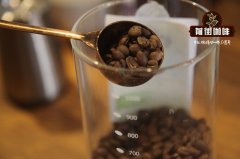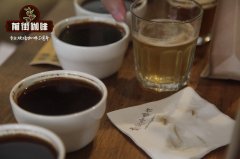Peruvian coffee producing area Chanchamayo Zen tea Mayo coffee planting varieties Flavor taste characteristics

Professional coffee knowledge exchange more coffee bean information please follow the coffee workshop (Wechat official account cafe_style)
Peru is the site of the ancient Inca Empire, covering an area about 35.7 times the size of Taiwan, stretching along the Antilles, the highest peak in South America.
At that time, 180 people from Spain entered the world-famous city of gold in 1533, plundering a large number of
Gold returned to Spain. Coffee was introduced in the 18th century, and the Andes stretched throughout Peru.
It spans an area of about 3 canvas 4. Peru is located in South America, covering more than half of Central America.
It is also the source of the Amazon. Peru has a population of about 28 million, of which more than 200000 are
Small farmers grow coffee with an average planting area of less than 2 hectares. Coffee is grown along the eastern side of the Andes
The planting height is rice, the planting area of coffee is vast, and the producing area can be divided into three areas: North, Central and South.
North District: Piura, Amazonns, San Mortin
Central: Huanuco, Junin, Pasco, Chanchamayo
Southern District: Cuzco, Ayacucbo, Apurinac, Puno, Urubamba
The main planting areas include the Chamayo Valley, the Beibu Mountain region and the Andes, located east of Lima.
On the western side of the hillside. More than 10 areas with unique coffee flavor can be divided. The annual output is about 3 million bags
Arabica coffee, all collected and washed, is mainly exported to the United States and Germany.
Up to 98% of Peruvian coffee is grown in forest areas, most of which are produced by small farmers. Most of
Peruvian coffee is grown under natural conditions, and local farmers have little money to buy fertilizers and pesticides.
Because of this, almost all locally produced coffee is made of organic beans. She is currently in South America.
The third largest exporter and the ninth largest exporter of coffee in the world. Coffee varieties are Typica.
Bourbon, Cattura, Pache .
Coffee cultivation in the north accounts for 43 percent of Peru's total area, including the Amazonas, Cajamarca, Piura and San Martin districts.
Altitude: 1250-1950 m.
Humidity: up to 12%.
Color: dark green, turquoise.
Plant ecology (Flora): Compositae, bitter incense tree, fern, pineapple family, orchid family, cedar family.
Animal ecology (Fauna): umbrella bird, puma, giant anteater, Andes deer, squirrel.
Coffee features: fragrant aroma, high acidity, moderate flavor, moderate mellow.
CAJAMARCA
The Cajamaca region is located in northern Peru, named after its capital, and covers the northern tip of the Peruvian Andes. The advantage of the region lies in the equatorial climate and the soil suitable for coffee cultivation. Although most producers are small farmers in their areas, they are often well organized and affiliated to the organization. The organization provides producers with technical assistance, training, loans, development and other support from all walks of life. One of the organizations, CENFROCAFE, operates in the area and has 1900 small farmers, promoting coffee roasting and local cafes to help farmers diversify.
Altitude: 900-2050m
Harvest: March-September
Variety: Typica,Caturra, bourbon, Panha Mengnuo, Catua
Qianjie coffee: Guangzhou bakery, the store is small but a variety of beans, you can find a variety of unknown beans, but also provide online store services. Https://shop104210103.taobao.com
Important Notice :
前街咖啡 FrontStreet Coffee has moved to new addredd:
FrontStreet Coffee Address: 315,Donghua East Road,GuangZhou
Tel:020 38364473
- Prev

Cuzco coffee growing region Cuzco coffee growing history story Flavor taste characteristics
Professional coffee knowledge exchange More coffee bean information Please pay attention to coffee workshop (Weixin Official Accounts cafe_style) Peru is also a big coffee producer As much as 98 per cent of Peruvian coffee is grown in forested areas, and most producers are smallholders. Peru has good economic conditions and a stable political situation, thus ensuring the excellent quality of coffee. however
- Next

Differences between Peruvian Coffee producing areas and Coffee Bean Flavor characteristics of Peruvian Coffee producing areas
Professional coffee knowledge exchange more coffee bean information please follow coffee workshop (Wechat official account cafe_style) Peruvian coffee producing areas North, Central and South Coffee planting area accounts for 43% of Peru, including the Amazonas, Cajamarca, Piura and San Martin districts.
Related
- Does Rose Summer choose Blue, Green or Red? Detailed explanation of Rose Summer Coffee plots and Classification in Panamanian Jade Manor
- What is the difference between the origin, producing area, processing plant, cooperative and manor of coffee beans?
- How fine does the espresso powder fit? how to grind the espresso?
- Sca coffee roasting degree color card coffee roasting degree 8 roasting color values what do you mean?
- The practice of lattes: how to make lattes at home
- Introduction to Indonesian Fine Coffee beans-- Java Coffee producing area of Indonesian Arabica Coffee
- How much will the flavor of light and medium roasted rose summer be expressed? What baking level is rose summer suitable for?
- Introduction to the characteristics of washing, sun-drying or wet-planing coffee commonly used in Mantenin, Indonesia
- Price characteristics of Arabica Coffee Bean Starbucks introduction to Manning Coffee Bean Taste producing area Variety Manor
- What is the authentic Yega flavor? What are the flavor characteristics of the really excellent Yejasuffi coffee beans?

